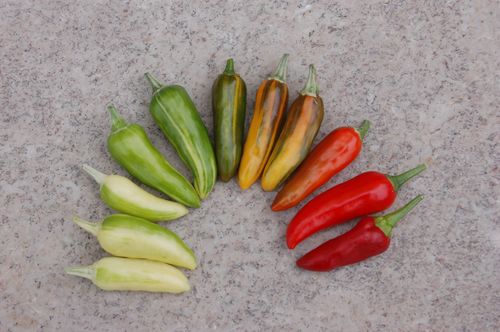If you’ve been to any of our meetings, you may have heard me talk about my new favorite spicy pepper – the fish pepper. When researching local heirloom varieties, the fish pepper was one of the most common recommendations. A fan of reasonably spicy peppers – give me a jalapeno any day but you can keep those ghost peppers – I was willing to give it a shot. I started a dozen pepper varieties that year. A terrible, trying year in the garden where almost nothing flourished. Two exceptions – the Fish and Buena Mulata peppers. Changing color as they ripen, they were not only some of the only successes in the garden at all that year – but also beautiful and delicious. And, that’s where my love affair with Pippin’s peppers began.

The Fish pepper, along with its siblings: Buena Mulata and Pippin’s Golden Honey, was saved from obscurity by Horace Pippin.
Pippin, 1888-1946, a Black American painter who largely lived in Philadelphia, addressed many topics through his art including slavery and segregation in the US.
Injured serving in WWI, Pippin painted 140+ works, many are displayed in DC, Baltimore and Philly and available to view today.
More about Pippin’s history and art:
Philadelphia Musuem of Art: In Conversation (YouTube)
Pippin traded rare seeds with H. Ralph Weaver, informal founder of what has become The Roughwood Seed Collection. Weaver’s collection was discovered by family, forgotten in baby food jars in a freezer. Prior to this, fish peppers were believed to be extinct.
Commonly thought to have arrived in the northeast areas of the US through enslaved people who carried the seeds from the Caribbean, fish peppers were widely grown in the Baltimore and Philadelphia areas in the late 1800s.
Today, The Roughwood Center for Heritage Seedways is a Pennsylvania based 501c3 non-profit educational organization devoted to heritage foods prepared from heritage seeds. Learn more about their work.
You can join the story – SoCo Seed Collective has all three of these peppers in our seed library, and would love more seed savers to help us preserve these important seeds.

Leave a Reply